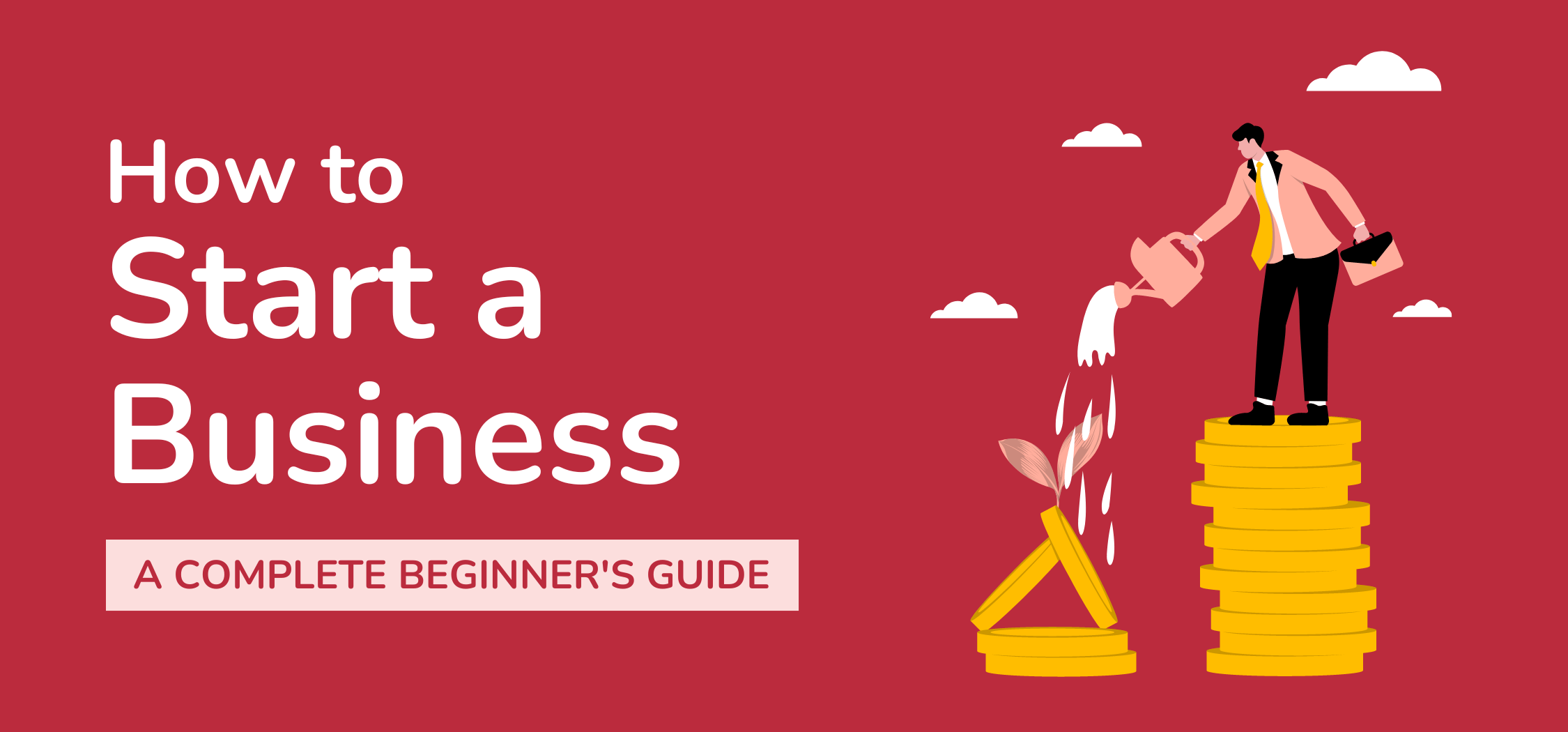
How to Start a Business: A COMPLETE Beginner's Guide
Starting your own business is perhaps one of the most fulfilling things you can ever experience.
Whether you plan to have a physical or online store or even become a digital nomad in a country like Estonia, starting any business will have its processes, like creating a business plan.
With that said, becoming a business owner can feel overwhelming. You start to pay taxes and other expenses, which could be stressful.
But there's no need to fret!
With this comprehensive guide we've written, you will learn how to start a business, from conceptualization to launch and growth!
How to Start a Business: Step-by-Step Guide
Whether you start a small business or immediately go big, it always starts with an idea with great potential.
Follow these next steps and increase your chances of turning any business concept into a prosperous reality!
Step 1: Discover Your Business Idea
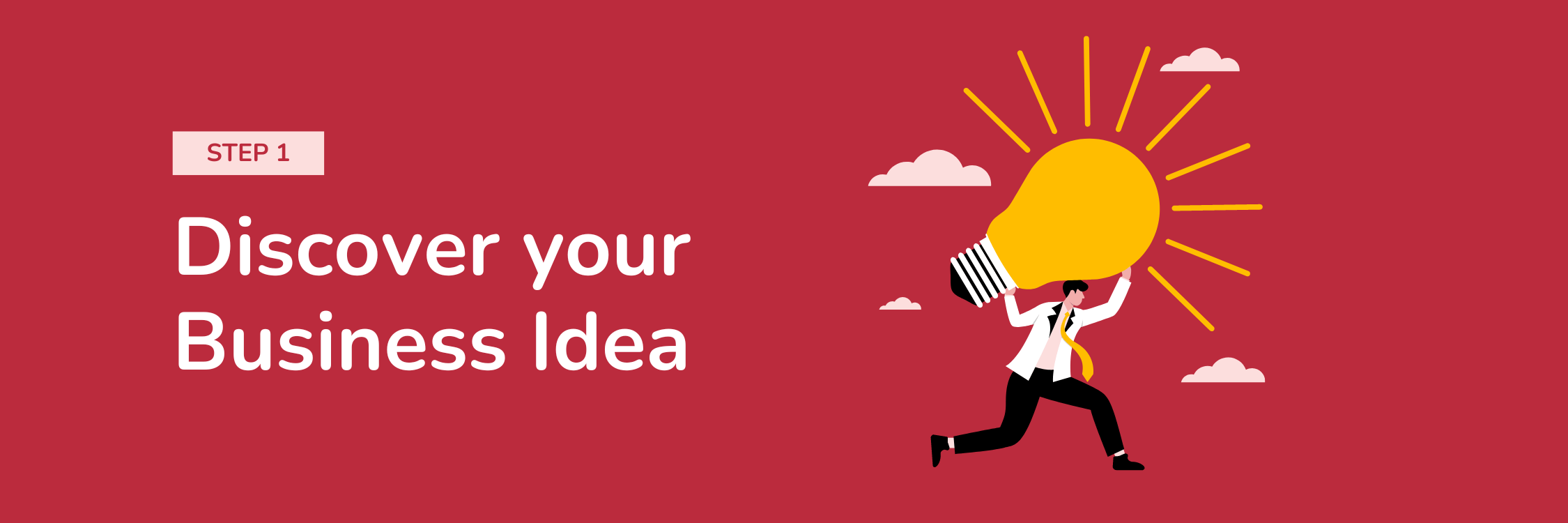
There are a MILLION profitable ideas out there. Find out what's best for you by answering these important questions:
- What do you love and don't love to do?
- What are your interests and passions?
- What are you good at? What do people ask you for advice?
- How much time and money are you willing to invest in this business?
- What services or products do you think the market needs that you can address?
It takes some self-reflection to discover the most viable business idea that should profit you and give you room for growth.
Know Why You Want to Start a Business
Before committing time and money to your small business or start-up, define your "WHY." Think about the following questions:
- Are you looking forward to earning big bucks?
- Is this venture a side gig for additional income?
- Do you want to change the world through your unique product or service?
- Are you in this for self-fulfillment?
- Did you see a rare opportunity and want to seize it with little thought?
Of course, you are primarily in business for profit. But if that's the only thing you are considering, we doubt you will be in business for long, my friend.
Passion and love for what you do should also compose your business purpose. Remember, the journey towards starting a new business is different for everyone.
True enough, you may see overnight successes being shown on the media; in reality you can only wish it was that easy!
As in most cases, it takes YEARS and YEARS of dreaming, cultivating, and learning before any business feels strong and steady.
It is important to focus on your business journey and not measure your success against someone else's.
Create habits and routines that keep you motivated.
Please write down and monitor your progress. Do this, and you should be right on track with how you're running your new business!
Consider Your Options
The options for business ideas are endless!
You can offer a service, design a product, resell an existing product, and many more!
You can open an office, a physical or online store, or an online business. The latter will have less overhead costs and allow you to work remotely.
But before you decide what type of business you want to get yourself into, there are a few things you need to consider:
- What type and how much funding do you have?
- How many hours in a day do you plan to invest in your business?
- Do you prefer to work from home, an office, a workshop, or remotely from literally anywhere with an internet connection?
- What products and services can you provide?
- What are your skills and expertise?
- Do you have business partners?
- For how long do you need to scale your business? Is a franchise model in consideration?
Answering these questions can give you a CLEARER picture of your business options.
Know Your Target Audience
Sometimes, no matter how well thought and set up your business idea is, you won't make money if you are not targeting the RIGHT customers!
Your target market or target audience is the group of potential customers for your brand. You aim to focus marketing toward this chosen demographic.
- This target can range from social class, age range, race, income stream, shared interest, and other buyer personas.
Defining WHO you want your customers to be is critical because your price and rates should reflect their buying power.
Other benefits of knowing and understanding your target audience include the following:
- It helps you make smart and cost-effective branding and marketing choices
- It influences your product development
- It allows you to focus on the most promising customers, thus increasing sales
To help you determine your audience, look for gaps in the market or an underserved audience.
You can also run a focus group study to investigate your competition and market needs.
Step 2: Create a Solid Business Plan
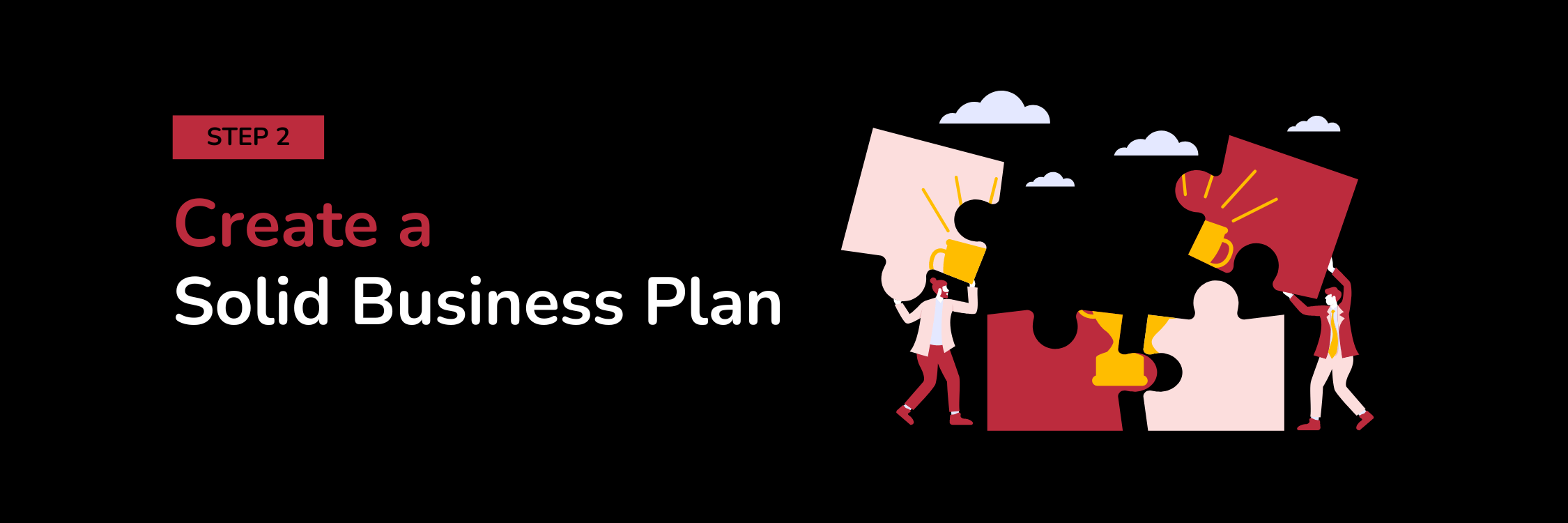
A strong business plan outlines what your new business does, who your business serves, and the system on how it operates.
A description of your products and services and how these meet customer needs should be included too.
This comprehensive document gives potential investors and financial institutions a CLEAR VISION of your business.
So, in any case, if you need external funding, they can make more calculated and wise decisions.
If you plan to self-finance, a business plan can help you spot potential issues and troubleshoot them fast.
A strong business plan should include the following:
- Executive Summary - This should be the first item on your business plan, even though it should be written last. The executive summary describes the new business in totality and emphasizes the company's goals and the methods to reach them.
- Company Brief - This section talks about what problems your product or service addresses. This portion of the business plan should also describe why people should subscribe to your product or service. Include credentials if you have to.
- Market Analysis - This portion of your business plan should include details of your target audience, a segmentation analysis, market size, growth rate, trends, and an assessment of your competition. The market analysis shows your position in the playing field of your chosen industry.
- Organization and Structure - This section composes an organizational chart that lists the hierarchy of who's in charge. This includes their qualifications and credentials.
- You should also describe what type of business model you plan to implement, your risk management strategies, and how you plan to manage your team.
- Vision and Mission - Thoroughly yet briefly describe your business mission and vision statement in this section. Talk about what you want to achieve and how you plan to get there.
- These goals should be "SMART," which is specific, measurable, action-oriented, and time-bound.
- Products or Services Offered - This section covers all the details about your products and services. This includes your initial offerings, how they compare to your existing competitors, how much they cost ad will sell for, who's in charge of production and inventory management, and other important details about your operation.
- Background Summary - Compile and summarize relevant data, research, and studies that could positively and negatively affect your industry and business.
- Marketing Strategy - This part of your business plan discusses your promotion strategies, how much you will spend on marketing and advertisement, and how long campaigns are expected to run.
- Financial Plan - Money is the key to your business moving forward. Thus, the financial plan must be meticulously composed. This portion should include a proposed budget and projected financial statements that contain information about your capital, assets, expenses, income, and liabilities.
- These can be found in income, balance, and cash flow statements. Cover up to five years of projections. If you have any funding requests, include them in your statement too.
Conduct Market Research
Market research is as important as product development.
You need to know what your competitors are doing and what customers want to spend their money on so your efforts don't go wasted.
Conducting market research helps give funders confidence in your business idea too!
If you plan on applying for external funding, potential lenders or investors will want to know the following:
- What sets your business idea apart from others?
- Is your service or product saturated in your area?
You might want to consider a different approach or specialization if your business idea is saturated enough.
For example, if you offer cleaning services, you might want to focus on moving-in cleanups or garage cleanups.
If you offer bookkeeping services, you might want to focus on a niche like specializing on accounting for food businesses.
Get started on your market research. Here are the two types you should do:
Primary Research
Your first market research stage entails collecting data from potential customers and patrons. This data is effective because it is current.
Use questionnaires, surveys, focus groups, and interviews. Take note of their responses.
- What do they want?
- What frustrates them about the existing products they are buying?
Your product or service should close this gap.
Gathering information from friends and family is not necessarily helpful unless they fall under your target market. You want to avoid any bias at all costs.
Secondary Research
The second type entails collecting information from sources like census data. You can use this data to analyze certain trends in the market.
They may not be as detailed and specific as compared to your primary research, but they can still paint a picture of your potential customers and your competition.
Market research, which is data gathering, is only the first step. The market analysis follows.
This involves researching the WHOLE industry through reliable third-party sources like public reports and industry publications and combining all insights to understand the competitive landscape better.
This process helps you clearly define your unique value proposition, setting your product or service apart from what other similar businesses are offering.
Conduct a SWOT Analysis
Small business owners must conduct a SWOT analysis when writing a business plan.
This lets you clearly understand your position, acknowledging where you are advantageous and where you fall short. This process helps you gear up for success and growth.
"SWOT" stands for Strengths, Weaknesses, Opportunities, and Threats.
- Strengths (internal) - This refers to your business's main advantage. An example could be a unique product or service or excellent customer care.
- What is your unique value proposition?
- What is your competitive advantage?
- What assets do you have?
- What knowledge or skill does your team have that is unique and advantageous?
- What system are you applying that expedites business operations?
- Weaknesses (internal) - These elements in a business are what hold it back from competing in the market efficiently and effectively.
- Which business processes need improvement or an update?
- What expertise does your team lack?
- What assets do you need to invest in to be competitive?
- Opportunities (external) - Opportunities present themselves at any time. So you better be conscious and observant.
- How much revenue you can gain from these opportunities depends on how much you capitalize on them too.
- Is there a market need that you can address?
- What trends can you ride on?
- What available talents can you hire?
- What products are customers asking for that you can provide?
- Can you offer something your competitors cannot?
- Can you increase your price and still be affordable?
- Threats (external) - Just like opportunities, threats can come when you least expect them. Threats can come from inflation in materials costs, shifts in customer priorities, world events, changing regulations, etc.
No business is future-proof.
It is important to be versatile and quick-thinking. In this unpredictable world, automating processes can help you adapt and run things smoothly amidst adversities.
- Are competitors offering new products and services?
- Are you dependent on one manufacturer or supplier?
- Are your employees at risk for poaching?
- Do you have a contingency plan for unforeseen events like natural calamities, pandemics, and wars?
Have a Way Out
As a small business owner, it is important to acknowledge that selling your company, transferring its ownership, retiring, or moving to better projects may be on the timeline.
If you are seeking funding, a good exit strategy shows lenders or investors that you are on top of the business from start to finish.
There are a few options for how to exit a business. Your choice will depend on the circumstance and goal.
Here are the common exit strategies applied:
- Selling majority shares of the business to a surviving business partner (in cases of partnerships and corporations)
- Selling the business to a third party
- Passing the business down to family members
- Liquidating the business assets
- Shutting down and walking away
Step 3: Look at Your Finances

Money is the lifeblood of EVERY business! It would be best if you had enough of it.
And when you do, you need to manage it well to keep operations running day in and day out.
Memorize Your Expenses
When you start a small business, you need to be mindful of all your business costs.
Estimate how much money is required to capitalize and operate for at least the next six months. This assessment is particularly helpful if you are applying for external funding.
Your expenses will vary depending on your business of choice. Operating completely online reduces overhead costs.
That's why establishing businesses with e-Residency is the current fad among entrepreneurs!
But even so, you will still need to spend on licenses, permits, and professional services.
If you plan to have an office space or shop, you will need to calculate costs for physical supplies, inventory, payroll, construction costs, rent, and other utilities.
Your business can take many years to profit, so it's better to overestimate these startup costs. It won't hurt to have an extra stash of cash!
Know How to Break Even
Once you have your total startup costs, you need to determine when your business will start making money, which is called the break-even point.
Any sale beyond break even is your profit!
The formula for the break-even point is:
- Break-even point = Fixed costs / Contribution Margin
- *Contribution margin = Sales price per unit – Variable costs per unit
To illustrate, let's say you are starting a T-shirt printing business. Your total start-up cost is $3000. Your variable cost per T-shirt printed is $5, and you sell them for $20.
- Fixed costs = $3000; Contribution margin = $15 ($20 - $5)
- Break-even point = $3000/ $15 = 200 units
This means you must sell at least 200 shirts to cover all costs. Your 201st shirt and beyond is already your profit.
Look at Ways of Generating Funds
There are two ways to gather funds – internally and externally.
Internal funds include:
- Personal savings/ personal assets
- Business credit card
- Funds from friends and family
Internal funding attaches financial risk to you. Using your savings and credit card could risk you going BANKRUPT if your business fails!
Allowing your friends and family to invest money in your business can strain relationships if it goes sideways.
That is why funding externally is the better option for many business owners.
External funds include:
- Business lines of credit – Banks will consider your business' revenue, credit score, and financial history when you apply for a business line of credit. So the risk is not solely on you.
- Equipment financing – When you purchase equipment, you can finance them through a loan or lease.
- Small Business Administration (SBA) microloans – This is a small business loan mostly ranging between 5000 - 25 000€ that you can use for initial inventory, supply, or equipment.
- Small Business Grants - Funding awarded by the government to businesses that qualify.
- Crowdfunding – Raising funds through interested public willing to donate or invest in your small businesses.
Choosing the right kind of funding is critical: the amount of money you need, your repayment period, and risk tolerance.
Open a Business Bank Account
Keep your personal finances SEPARATE.
For an organized money system, you must keep a separate business bank account only used for business transactions like paying suppliers and invoicing customers.
Have a separate bank account for personal funds.
You are able to open a bank account right after the company has been established and need to provide your legal business name and registry code.
A business account is necessary if you plan to apply for a business loan or line of credit.
Use Accounting Software or Hire a Bookkeeper
Keeping track of your inventory, sales and expenses is a whole different job. Incorporating an accounting software like our own developed Dashboard will help you manage these tasks.will help you manage these tasks.
Some programs even have extra features like generating invoices, running reports, calculating taxes, and generating financial statements.
If you don't feel comfortable using accounting software, hiring a bookkeeper will do too!
Step 4: Choose a Business Name
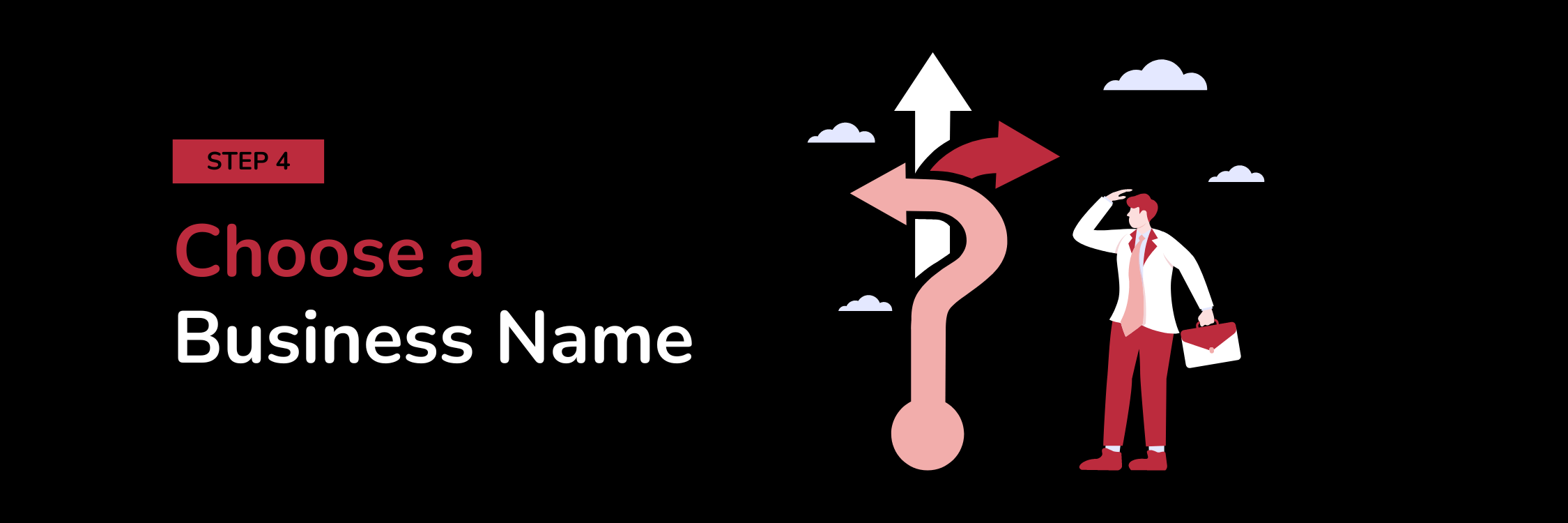
Every successful business should have a memorable business name.
If you plan to establish an internet presence, choose the same domain name to avoid any confusion.
When you register your business name and apply for a business license, you cannot choose the same name as another registered company in your state.
You cannot infringe another trademark too. Violation of this will cause you legal damages. So stay unique!
There are also such things as "Doing Business As" names.
Depending on your state, these may or may not be needed to be registered. The DBA is the name on which you are branding and trading.
EXAMPLE: Your legal business name can be "Rose's Kitchen Food Ventures, Inc." doing business as "Rose's Kitchen." This version of your business name makes it much easier to brand products and services.
Step 5: Identify Your Business Structure
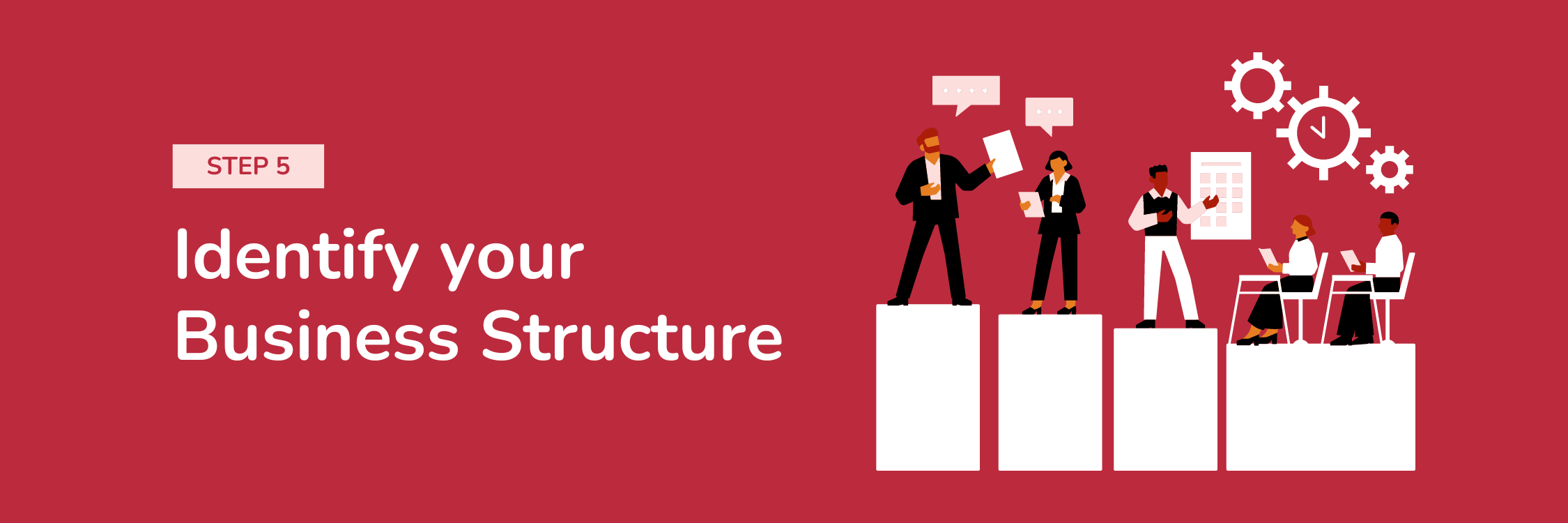
Another decision to make when starting a business is the business structure you wish to implement.
When registering your business, requirements and documents will vary depending on your business structure.
Your business structure impacts how much tax you owe, the extent of your personal liability and risk, profit share, daily operations, and responsibilities.
Here is the list of business structures you can consider:
Sole Proprietorship
The majority of small businesses start as sole proprietorships, meaning the business is owned by one person who usually runs the business day-to-day.
When setting up a sole proprietorship, risk and advantage fall on you. So you better be ready to face both.
In worse cases, if your sole proprietorship faces lawsuits, your personal assets can be involved.
PROS:
- The sole owner receives all profits
- Profits are only taxed once
- The owner has complete control
- Easiest and least costly business structure to organize
CONS:
- Unlimited liability
- Limited funds
- No separate legal status
Limited Liability Company (Private Limited Company)
A limited liability company or LLC is a hybrid business structure that offers the personal liability protection of a corporation and the operational flexibility of a sole proprietorship or partnership.
However, an LLC is a more complex business structure than a partnership. You may want to consult a lawyer to assist you with filing the paperwork.
PROS:
- Specifically created for small businesses
- Separate legal entity
- Usually taxed as a sole proprietorship
- Unlimited number of owners
CONS:
- It can be costly to form
- Yearly administrative costs
- Personal tax liability
- Requires legal and accounting assistance
Public Limited Company
Public companies start as private companies and then go public, trading their stocks on the public exchange market.
This is a way for businesses to access a wide pool of funds to finance projects and business operations.
A public company needs to hold annual general meetings for shareholders to participate in electing a new board of directors, discuss policies, and establish goals.
All shareholders are entitled to a share of the profits through dividend distributions.
PROS:
- Access to more capital
- Increases business credibility
- Increases business resale value
- Allows for diversification of funds
CONS:
- Profits need to be shared
- Difficult to establish
- Less overall control over the company
- Sensitive data may need to be reported regularly
- More expenses
- Double taxation often occurs
General Partnership
Partnerships are two or more people sharing ownership over one business. All partners should agree on how decisions will be made and how profits will be shared.
When establishing a partnership, it is crucial to outline things in case things go sour between partners.
It is best to seek legal advice to create a partnership operating agreement.
PROS:
- Easy to establish
- Separate legal status for liability protection
- Profits are taxed only once
- Partners can complement each other's expertise
CONS:
- Partners are jointly and individually liable for their actions
- Profits must be shared between partners
- Divided decision making
- Businesses can suffer if partners disagree
Corporation (Commercial Association)
A corporation is owned and operated by multiple owners or incorporators.
You can either be a C-corporation or an S-corporation. S-corps or small corporations benefit from limited taxes when meeting certain requirements.
Larger companies that want to attract venture capital establish a C-corp.
PROS:
- Limited liability for owners
- Unlimited lifespan; shares of a corporation can be passed on
- Can have an unlimited number of shareholders
CONS:
- Subject to double taxation
- Corporations are more expensive and complicated to set up than other business structures.
Step 6: Complete All Government Requirements and Register Your Business
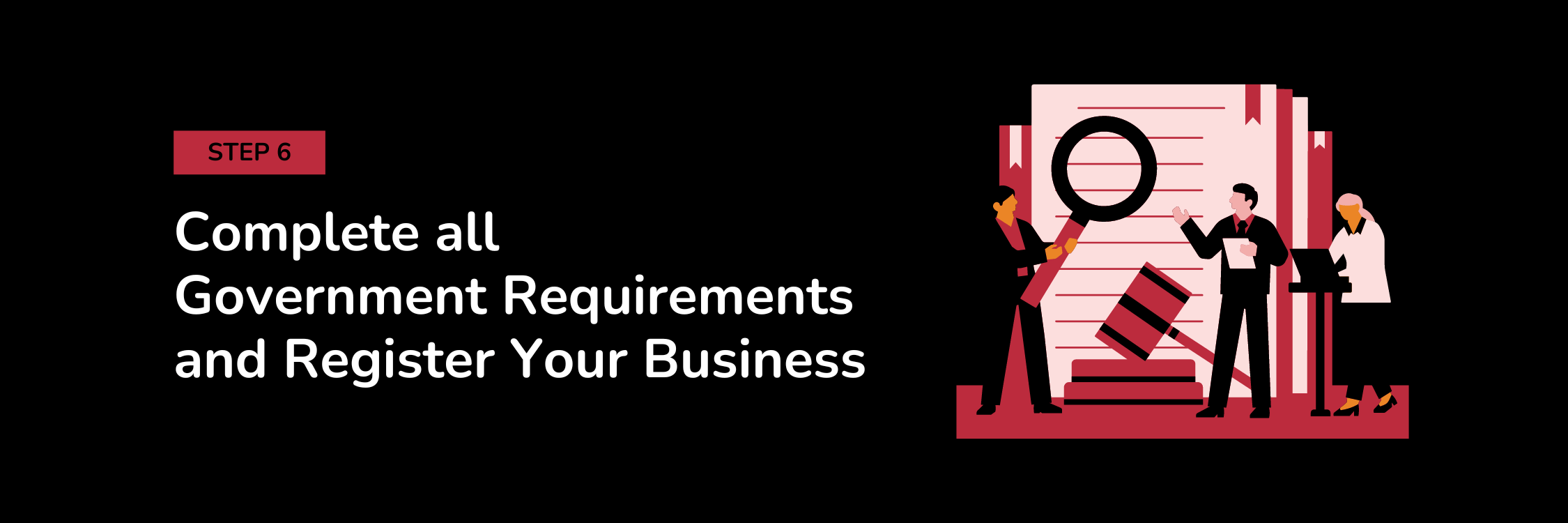
Filing for a business license and paying sales tax are two things a government will require you to operate legally.
Check out what else you need to comply with:
Applying for E-Residency
Running your business completely through a digital landscape is cost-saving.
When you apply for an e-residency in Estonia, you can run your EU business 100% online from wherever you are in the world and eliminate paperwork and bureaucracy.
We'll discuss this in detail later on in this article.
Register Your Business
Registering your small business may not always be necessary. But in the legal structure, it will help you get personal liability protection and tax benefits.
When you file for a corporation, LLC, or other business entity, you will need to file forms with a business agency.
This process might require a registered agent to accept all your legal documents.
After submitting and paying a filing fee, the state will send you a certificate that allows you to apply for other licenses, a tax identification number, and business bank accounts.
Income Tax Forms
When starting a small business, planning to pay your taxes can be complex.
Whereas corporate tax rate in Estonia is 0%, the government can collect a variety of taxes like payroll tax and dividend tax, among others.
Depending on your business model and circumstance, other taxes like property tax and unemployment tax may apply to you.
Professional Licenses and Permits
Your industry and jurisdiction will dictate what business licenses and permits you need. It is often a mix of local and federal licenses.
It is best to check with your local government and a lawyer for exact information and instruction on the legal structure of your area.
Join the E-Business Community
Joining an online community in your industry is very beneficial in building relationships. You get mutual help from shared experiences and honest feedback.
Some of the famous e-commerce communities are Shopify Plus Masters, E-Commerce Elites Mastermind, and E-Commerce Fuel Forum.
You can find a lot of distinct e-business communities through social media.
Step 7: Secure Your Business Insurance
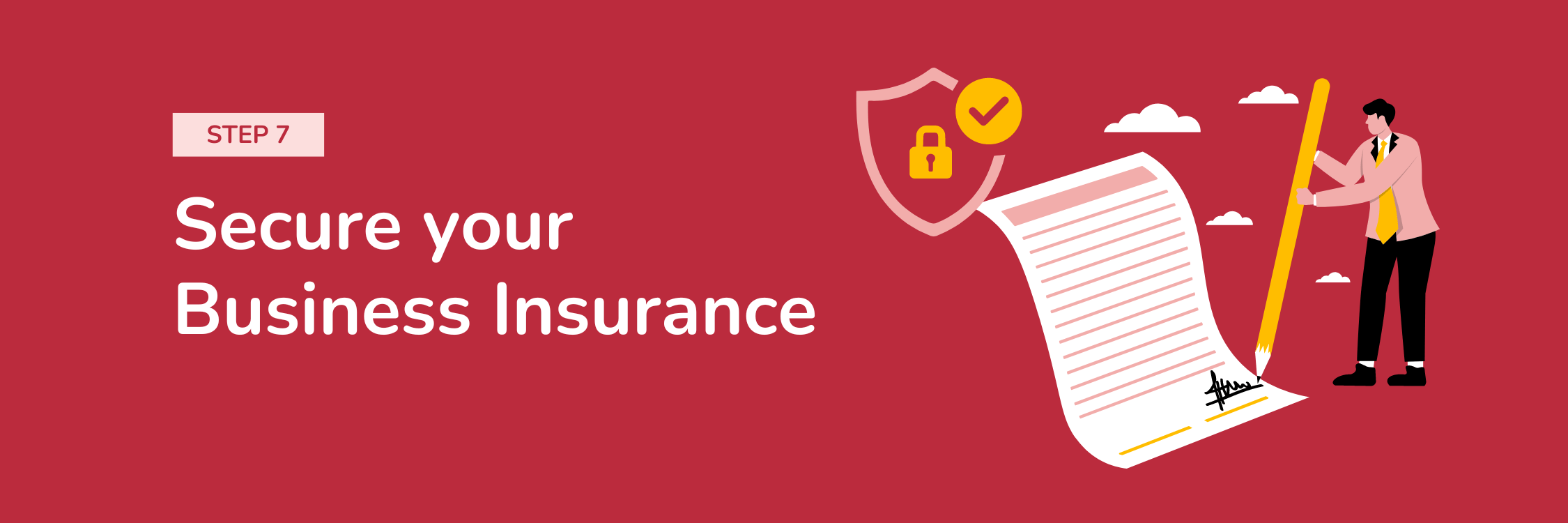
Whether you are operating online or don't have employees, you still need insurance for your business.
The type and amount of insurance you need will depend on your business model and the risks that come along with it.
You might also need more than one insurance policy and additional coverage as your business expands. An insurance agent can gladly assist you in acquiring these.
Basic Types of Insurance Coverage for business
Here are the common insurance policies acquired by businesses:
- Commercial Property Insurance pays claims on business property damages caused by fires, storms, vandalism, and other disastrous events. The insurance covers your office space, store, equipment, and inventory.
- Business Interruption Insurance pays for the loss of income if your business is forced to close temporarily due to a covered circumstance like natural disasters and wars.
- Liability Insurance protects your business from third-party claims of property damage, bodily injuries, and personal injuries like false advertising or defamation.
- Product Liability Insurance protects against claims when your products or services cause bodily injuries or property damages to your customers.
- Employee Practices Liability Insurance covers your business from employees claiming experiences of sexual harassment, discrimination, or wrongful termination.
- Professional Liability Insurance pays claims when your neglect causes damages to your customers.
- Workers' Compensation Insurance pays for employee medical expenses and income replacement in case they get injured on the job.
Importance of Business Insurance
Unfortunate events come unannounced. Incidents like property damage, theft, and employee and customer lawsuits can be costly.
You better be ready financially to address these events. And that's where insurance comes in handy!
Business insurance can help you prepare financially when unplanned expenses occur.
You pay a much lesser premium for the total amount of coverage you could have in case of such claims, saving you the hassle of finding additional funding.
Step 8: Generate Funding
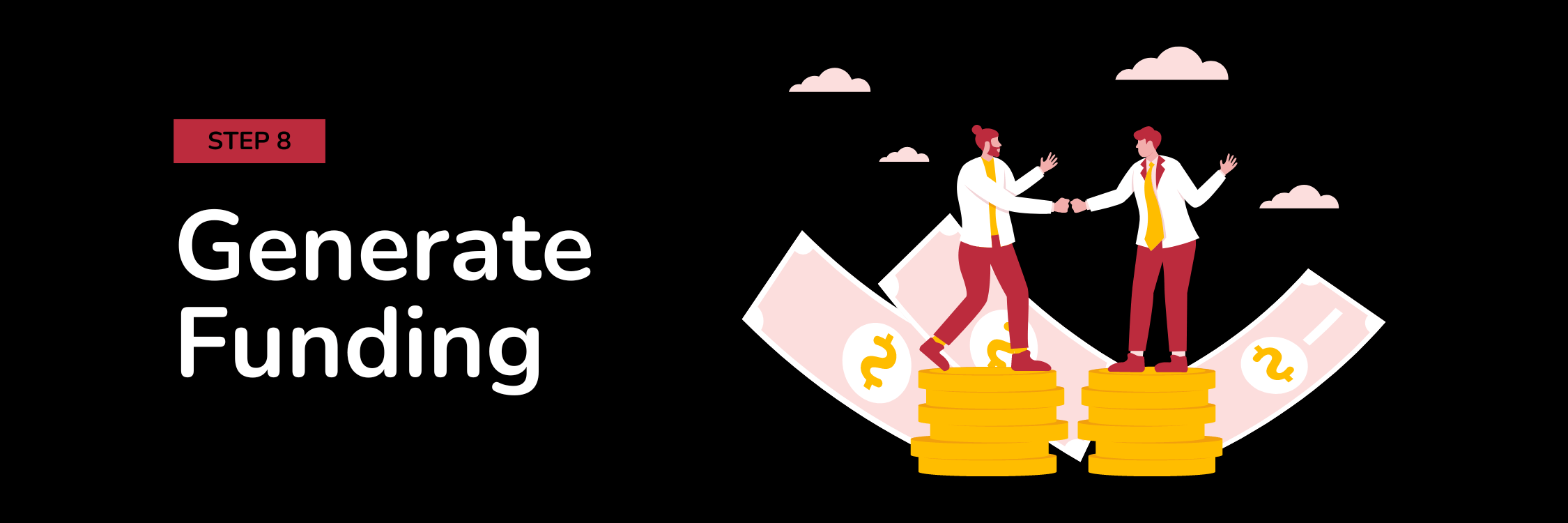
The costs of starting a business are what often prevent people from pursuing their business dreams.
Good thing there are many ways where you can find external funding for your start-up:
Business Grants
The federal government offers grants with no need for repayment.
These are offered to businesses that offer innovation, export growth, or belong to a particular minority.
Business Loans
A business loan might be advantageous if you don't want to share ownership or profit with investors.
Make sure to show a comprehensive business plan and financial plan to banks and credit unions to get approved.
Crowdfunding
This is a way to raise money by soliciting from a large group of people as a form of donation or by offering them certain perks rather than sharing ownership or profit.
Investors
You can gather venture capital from "angel investors" who are willing to fund your idea.
However, these venture capitalists often expect membership or a stake in your company. A detailed business plan is necessary to secure an investment.
Bootstrapping
Bootstrapping refers to self-funding through the use of existing personal resources.
Additional Things to Do for Your New Business
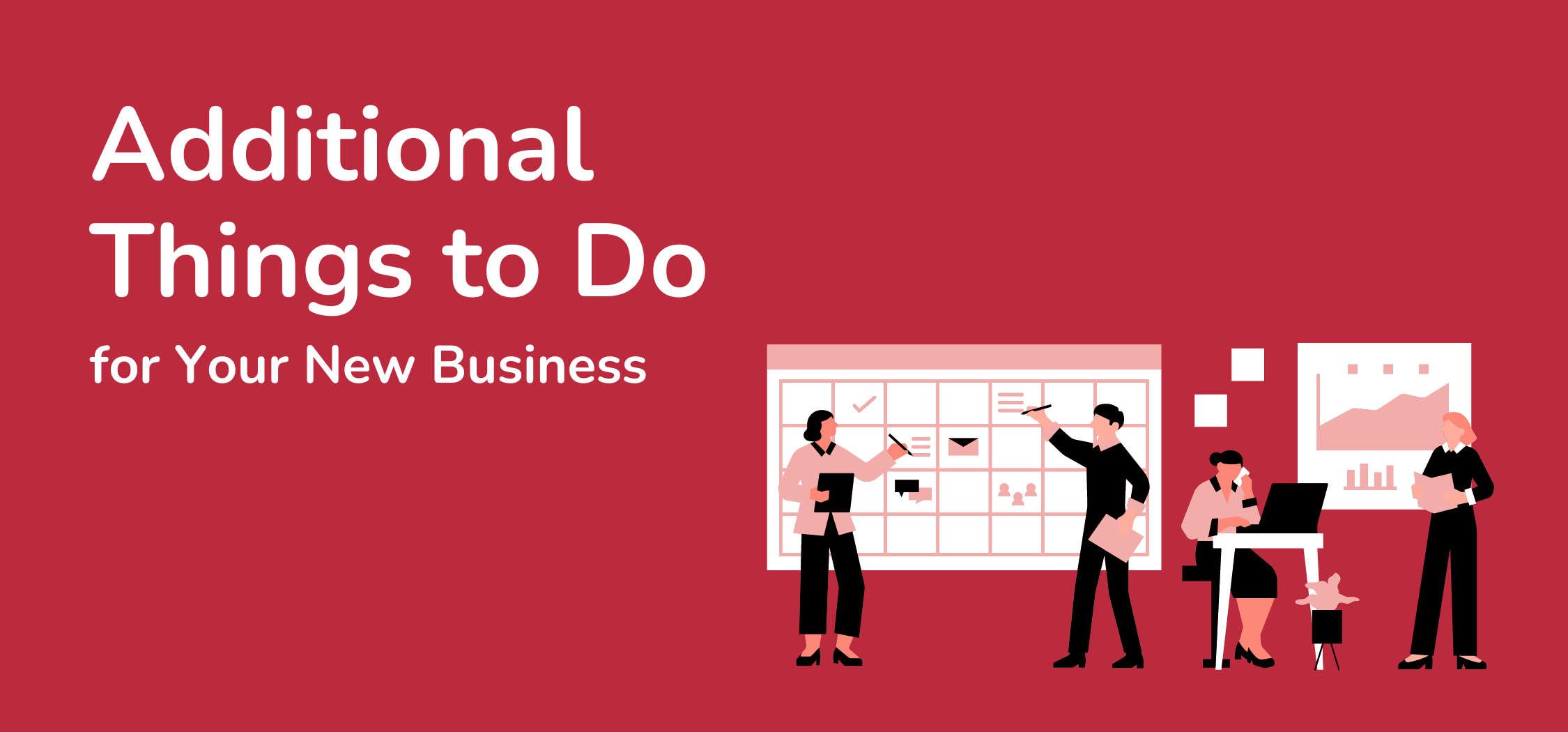
After establishing your business, here are the additional steps to take to operate smoothly:
Hire Employees
You may start your business on your own. But as your business grows and your customer base increases, you will need to delegate tasks.
Building a team will be necessary to run day-to-day operations efficiently.
Recruitment
You can utilize hiring platforms, job boards, freelance platforms, and social media to find the right employee candidates.
Some credible recruitment sources include: Indeed, Glassdoor, Craigslist, LinkedIn, Facebook, Upwork, Freelances, and Fiverr.
Vetting Process
Vetting is evaluating a candidate's qualifications and background and eliminating those who don't qualify.
Background checks, technical assessments, submission of security requirements, and interviews are steps to vetting.
Focus on Marketing Efforts
The internet must be your best friend when it comes to marketing!
The internet is a space that allows you to engage with your target audience and introduce your brand. Here's how to get started:
Launch a Website
A website will still earn good customers even if you're a brick-and-mortar business.
Plus, creating a web presence won't take long if you use a standard informational website or e-commerce site.
You can get it done in HOURS!
SEO Optimization
After getting a website or an e-commerce store, it's time to create quality content and focus on optimizing it for search engines (SEO).
SEO is a way of increasing the VISIBILITY of your business when potential customers search for specific keywords online.
When your content is optimized, search engines will point out your site to the customer, increasing the chances for sales.
Utilize Social Media Platforms
Potential customers use social media every day!
You need to be present on these platforms too. Facebook, Instagram, and TikTok are common platforms for marketing your products and services.
Make sure to post relevant and interesting content on your social media accounts to drive traffic.
Customers also use online directories like Yelp, Google My Business, and Facebook to discover small businesses.
Registering your business in these directories helps you get noticed too.
Scale Up as You Earn
Scaling your business requires growing your customer base and increasing your revenue. There are many ways to do this, including:
- Expanding marketing efforts
- Adding and upgrading products and services
- Collaborating with other creators that can complement what you offer
- Automate or outsource certain tasks like marketing and accounting so you can focus on scaling the business
Scaling entails additional expenses. Keep an eye on your finances when scaling your business, and make sure you are still profitable.
If you are not making more money, you might need to reduce your expenses or increase your revenue sources.
Things You Need to Know When Starting a Business in Estonia
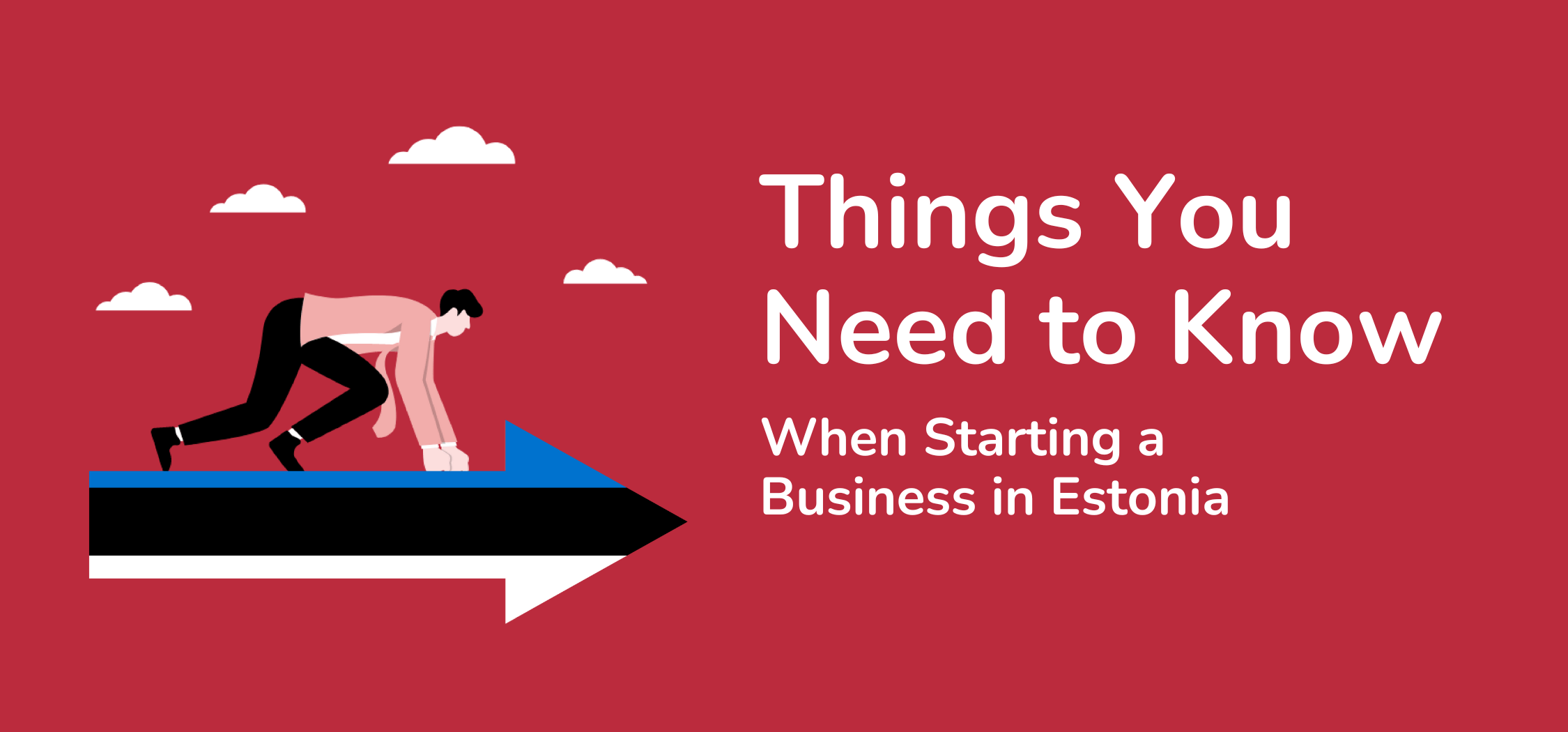
Do you want to open a business and operate it remotely? Estonia might be the place for you!
Ease of Application
Starting your business in Estonia is easy!
If you've got yourself a service provider, you can submit requirements and register your business through them, cutting cuts down the bureaucracy and paperwork.
For e-residents, you'll need the following:
- e-Residency card
- Passport copy
- Legal address and contact person of your company
For a non-e-resident, you'll need the following:
- Power of Attorney
- Passport copy
- Legal address and contact person of your company
Great for Start-Ups and Digital Nomads
Digital nomads make up the LARGEST population of foreign entrepreneurs in Estonia. The main reason is the favorable tax system of Estonia.
If your profits stay in the company and are reinvested, you will not need to pay corporate income tax.
Now isn't that a good deal?
Besides that, if you decide to visit the country, there's Wifi in every part of Estonia. You can run your business anywhere, even with your phone.
e-Residency
E-Residency is an electronic form of identification that allows members to avail of online in Estonia, such as government portals and online banks.
With this, you can start and run a company in Estonia 100% online, do online banking, exchange encrypted documents and digitally sign relevant business documents.
Tax Rates
Personal income tax in Estonia is flat at 20%, while the amount of the annual tax-free income is progressive:
- 1200 € gross monthly income enjoys the tax exemption of 500 €.
- 1201-2100 € gross monthly income, the tax exemption gradually decreases.
- There is no tax exemption if you earn more than 2101 € per month.
Corporate income tax in Estonia is 0% if the profits are retained and reinvested. If profit is paid out in dividends, a 20% tax rate applies.
The social tax in Estonia is 33%. The value-added tax (VAT) in Estonia is 20%.
Price
Registering your business in Estonia will cost you at least the following:
- E-Residency Fee = €120
- Business Application Fee = €265
- Payment Processing = €1.99
- Courier Fees = €20
*Fees might change; additional professional fees might be necessary
Collecting Money
Collecting money from your Estonian business can be in the form of salary or company dividends.
This can be easily received through online banking. If necessary, taxes need to be paid too.
Frequently Asked Questions (FAQs)

Got more questions about how to open a small business in Estonia? We've got you covered.
Is Estonia a Good Place for Foreigners to Start a Business?
YES, Estonia is a perfect place for foreigners to start a business. E-Residency has made it easy to start and operate a business online!
For e-residents, if you can gather the necessary documents, fill out an application online, and register your company name, you can have your Estonian company ready in just one working day.
For non-residents, it might take a little longer due to the need to appoint a lawyer.
How Much Does It Cost to Start a Business in Estonia?
For starters, the state fee for applying for e-Residency is 120 €, and registering a company is 265 €.
I you need professional assistance, then we charge 470€ for the onboarding and company incorporation using e-residency; the price includes VAT and the 265€ state fee!
What Incentives Does Estonia Offer for Foreigners Looking to Start a Business?
Besides the favorable corporate income tax arrangement, Estonia offers a wide range of grants and consultation services to help foreigners develop and expand their businesses.
What Is the Simplest Way to Start a Business?
When starting a business, the simplest is perhaps opening an eCommerce store simply because overhead costs are minimal. It is also convenient to operate completely online.
What Are Some Profitable Business Ventures or Industries?
Any small business where you are passionate can be profitable.
But the most popular fields today are IT, consultations, marketing, advertisement, retail/wholesale, e-commerce, and publishing.
Final Thoughts

Starting a business is NO easy feat! But all the effort will be worth it in the end.
By diligently applying all the steps and insights from this article, your successful business is definitely in the works.
Whether you plan to apply your business in Estonia, your hometown, or the digital landscape, we wish you the best!
If you have any questions on starting a business in Estonia or need assistance with incorporation, feel free to get in touch with us via our webpage or write directly to hello@comistar.com.
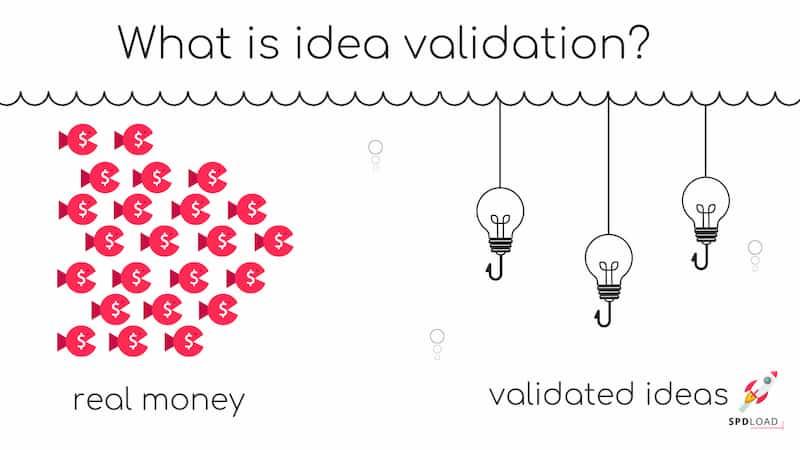

![How to Open Company in Estonia with e-Residency [Full Guide]](https://comistar.ee/media/post/63e14f9373f841a5b769d2e08f82c56f.jpg)